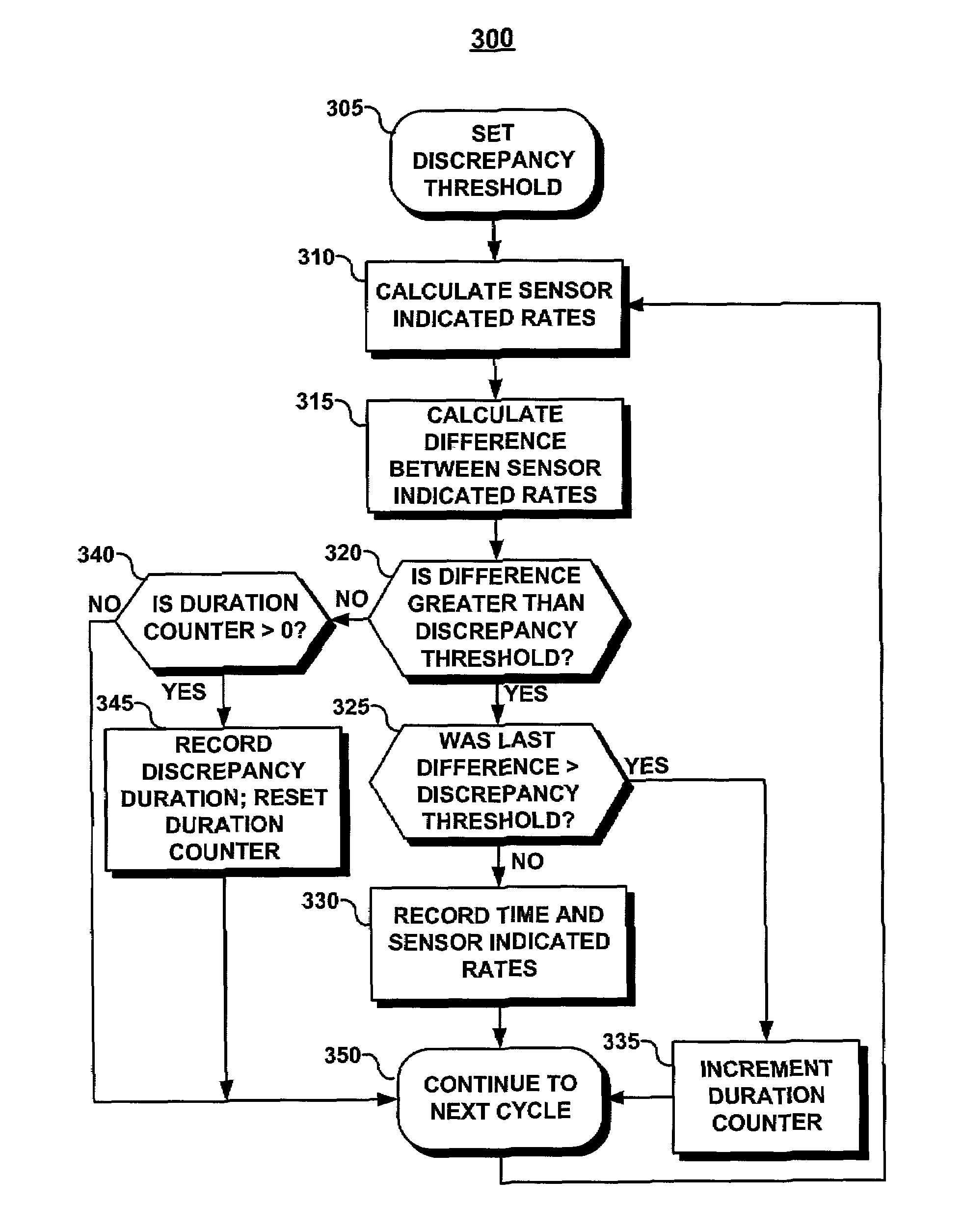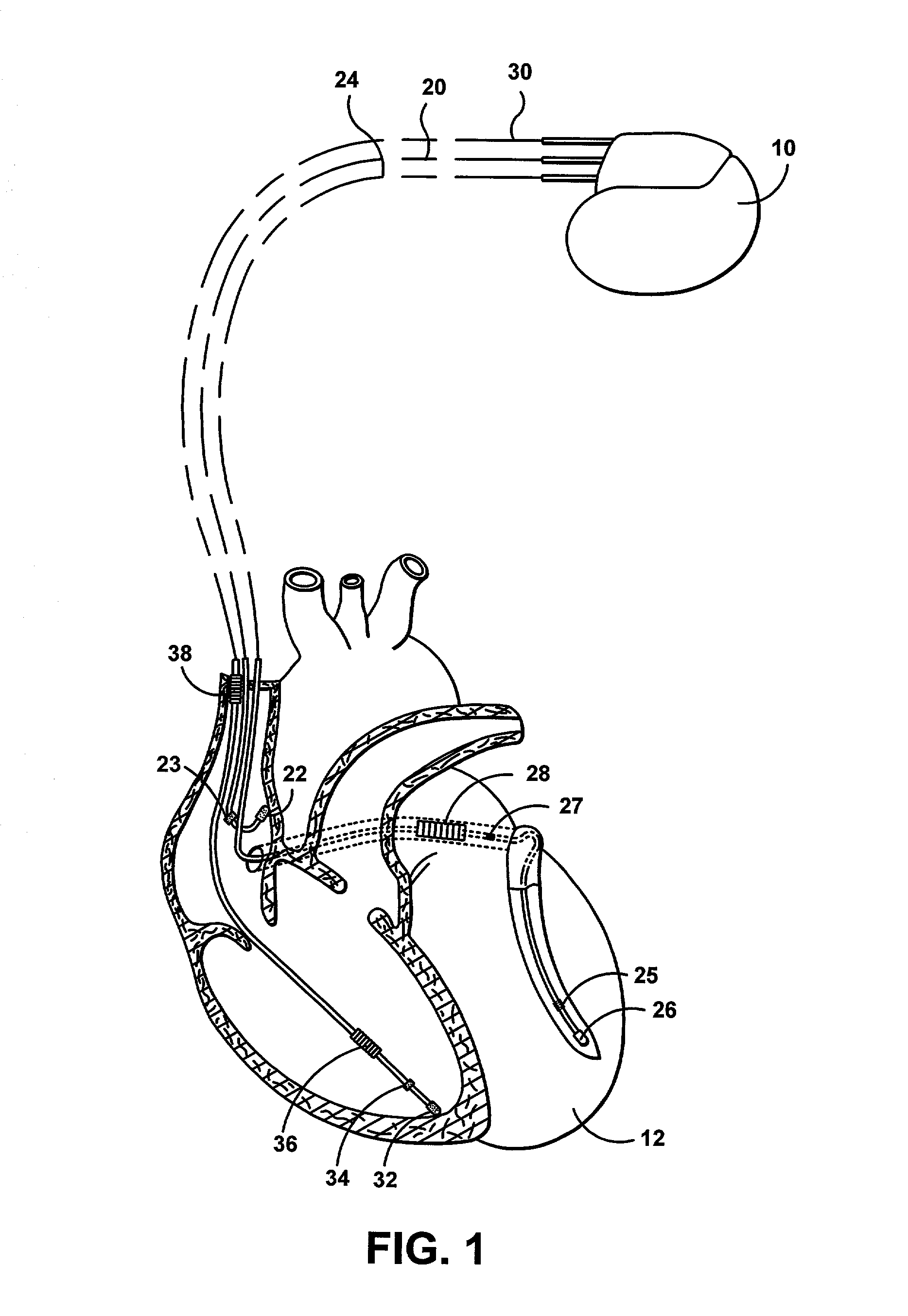Method and apparatus for monitoring sensor performance during rate-responsive cardiac stimulation
a sensor and rate-responsive technology, applied in the field of implantable cardiac stimulation devices, can solve the problems of more oxygenated blood, fixed rate pacing, and insufficient activity signal to the control unit,
- Summary
- Abstract
- Description
- Claims
- Application Information
AI Technical Summary
Benefits of technology
Problems solved by technology
Method used
Image
Examples
Embodiment Construction
[0044]The following description is of a best mode presently contemplated for practicing the invention. This description is not to be taken in a limiting sense but is made merely for the purpose of describing the general principles of the invention. In the description of the invention that follows, like numerals or reference designators will be used to refer to like parts or elements throughout.
[0045]The present invention is directed at monitoring discrepancies between individual sensor indicated rates (or sensor levels) in a dual or multi-sensor rate responsive cardiac stimulation device. A cardiac stimulation device possessing rate responsive capabilities will thus be described in conjunction with FIGS. 1 and 2, in which the features of the present invention could be implemented. It is recognized, however, that numerous variations of such a device exist in which the methods of the present invention could be implemented without deviating from the scope of the present invention.
[0046...
PUM
 Login to View More
Login to View More Abstract
Description
Claims
Application Information
 Login to View More
Login to View More - R&D
- Intellectual Property
- Life Sciences
- Materials
- Tech Scout
- Unparalleled Data Quality
- Higher Quality Content
- 60% Fewer Hallucinations
Browse by: Latest US Patents, China's latest patents, Technical Efficacy Thesaurus, Application Domain, Technology Topic, Popular Technical Reports.
© 2025 PatSnap. All rights reserved.Legal|Privacy policy|Modern Slavery Act Transparency Statement|Sitemap|About US| Contact US: help@patsnap.com



